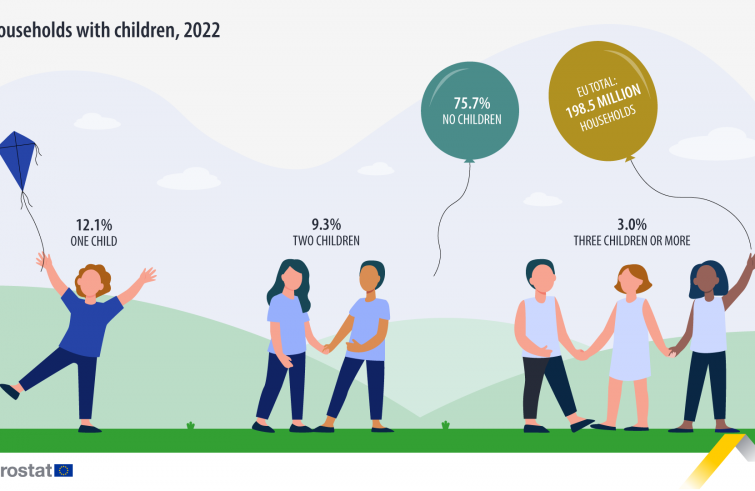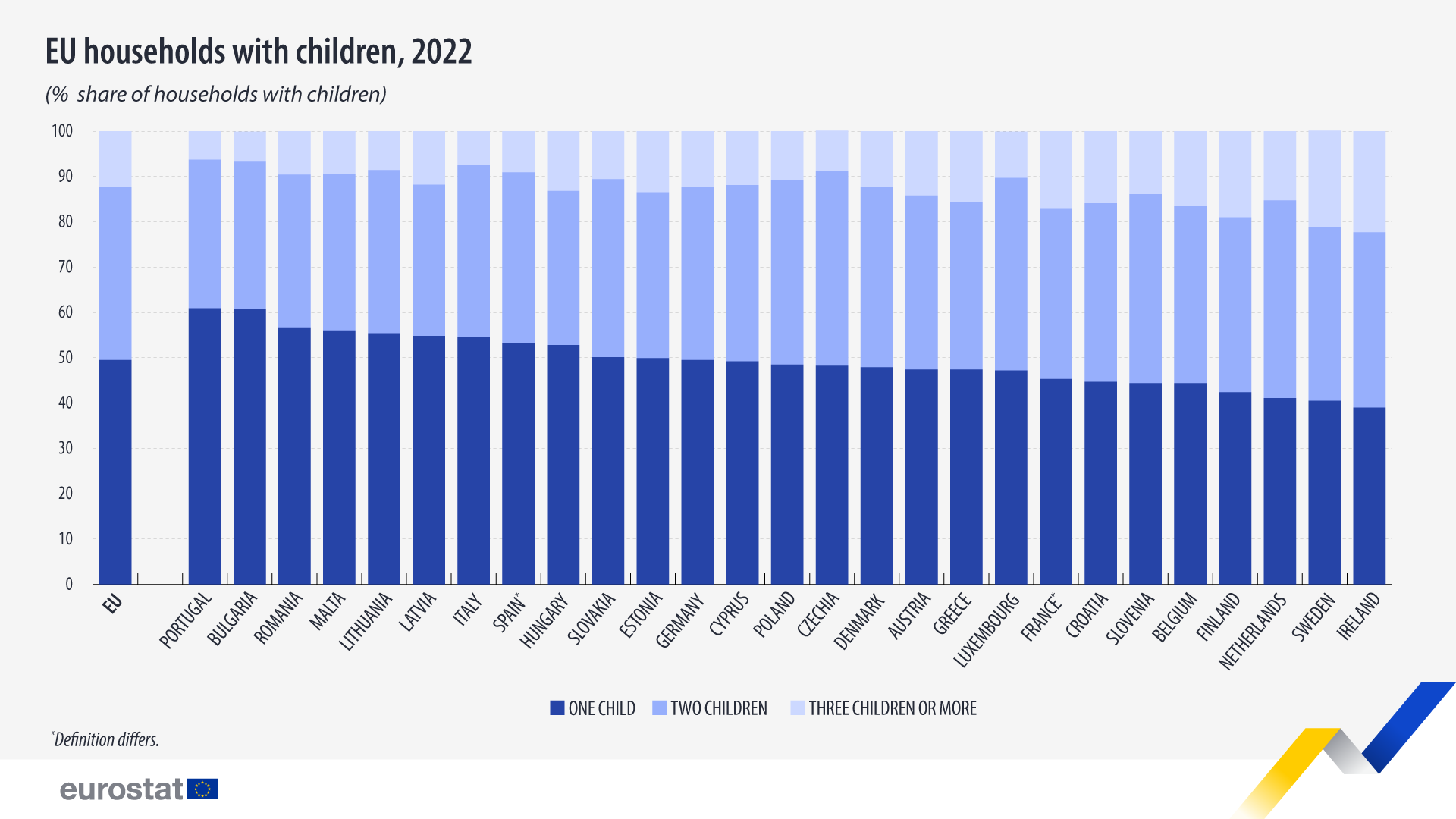
In the 27 countries of the European Union, there were nearly 200 million households (out of a total of 448 million inhabitants) in 2022, including households with only one (single, separated or divorced, elderly or widowed people living alone…) or more persons. Slightly less than a quarter of these households (24.3%) included children, according to a study published by the Statistical Office of the European Commission Eurostat. About 10% of households included either 1 child (12.1%) or 2 children (9.3%), while only 3.0% of the EU’s households included 3 children or more.
This is an indirect confirmation of the demographic crisis and the average ageing of the European population.
The study – released to mark World Children’s Day, which is celebrated every year on 20 November – also shows that the total number of households in the EU rose by 6.9% between 2012 and 2022. The percentage of households that included at least 1 child decreased by 2.4 percentage points over the same period. The highest shares of households with children were recorded in Slovakia (33.9%), Ireland (32.2%) and Cyprus (30.6%), while the lowest shares were in Finland (18.4%), Germany (20.1%) and the Netherlands (21.8%).
Households with 1 child were obviously the most common in the EU. Almost half of the households with children had only 1 child (49.5%), while 38.1% had 2 children and 12.4% included 3 or more children.
“Households with 1 child – the study shows – were the most prevalent among households with children in all EU countries, except for the Netherlands, where households with 2 children had a higher percentage”. More than half of the households with children were with 1 child in Portugal, Bulgaria, Romania, Malta, Lithuania, Latvia, Italy, Spain and Hungary.
Households with 3 children or more were the least common across all EU countries. Their percentage among all households with children ranged from 22.3% in Ireland, 21.2% in Sweden and 19.0% in Finland, to 6.3% in Portugal, 6.5% in Bulgaria and 7.4% in Italy.

